Small dogs face unique feeding challenges that bigger breeds don’t have to worry about. Small dogs need smaller, more frequent meals because their tiny stomachs can’t hold much food, yet their fast metabolisms require steady energy throughout the day. Getting their nutrition right isn’t just about portion size – it’s about timing, food choices, and avoiding mistakes that could seriously harm your petite pup.

Table of Contents
I’ve seen too many small dog owners struggle with feeding routines that work for larger breeds but leave their little companions hungry, overfed, or dealing with blood sugar crashes. Your Chihuahua’s needs are completely different from a Golden Retriever’s, and the size of food bowls can actually affect how much owners feed their dogs.
You’re about to discover the exact feeding strategies that keep small dogs healthy, satisfied, and thriving. From meal timing to portion control, I’ll walk you through everything you need to know to become your tiny dog’s nutrition hero.
Feeding Tips for Small Dogs – Key Takeaways
- Small dogs require multiple small meals throughout the day rather than one or two large feedings
- Proper portion control and food bowl size are crucial for preventing overfeeding in small breeds
- Creating a consistent feeding routine helps prevent common health issues like hypoglycemia and digestive problems
Why Small Dogs Need Special Feeding Tips
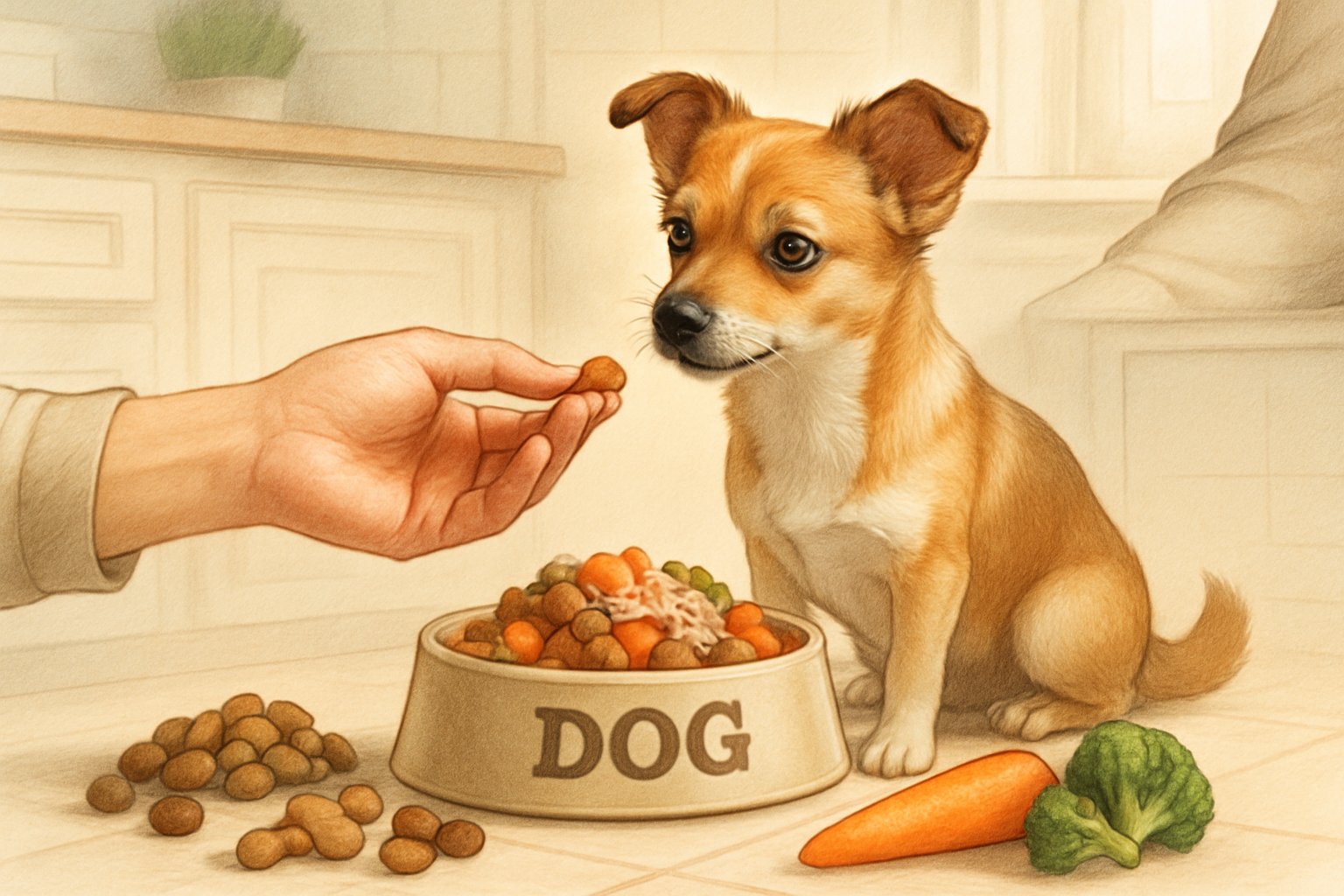
Small breed dogs face unique challenges that make standard feeding advice potentially harmful to their health and wellbeing. Their faster metabolisms, smaller stomachs, and increased risk of hypoglycemia require specialized nutrition approaches that differ significantly from what works for larger dogs.
Small Breed Dog Nutrition Explained
I’ve seen too many small dog owners struggle with feeding advice that just doesn’t work for their tiny companions. Here’s the reality: small dogs have very special needs in many areas and nutrition tops that list.
Small breed dogs need higher calorie density in their food. A Chihuahua weighing 4 pounds needs about 200 calories per day, while a 70-pound Golden Retriever needs around 1,200 calories. That might seem obvious, but here’s the kicker: the small dog needs 50 calories per pound compared to just 17 calories per pound for the larger dog.
Their tiny stomachs can’t hold large volumes of food. This means every bite must pack maximum nutritional value. Low-quality fillers that might be okay for big dogs can leave small dogs malnourished.
Key nutritional differences for small dogs:
- Higher fat content (12-18% vs 8-12% for large breeds)
- Smaller kibble size for easier chewing
- More frequent feeding schedules
- Enhanced vitamin and mineral concentrations
The Unique Metabolism of Small Dogs
Think of small dogs as tiny furnaces that burn fuel incredibly fast. Their metabolic rate runs twice as high per pound compared to large breeds. This isn’t just about being active – it’s basic biology.
Small dogs lose body heat much faster through their skin. They’re constantly working to maintain their body temperature, which burns calories at an alarming rate. I’ve watched a 3-pound Yorkie shiver after just 10 minutes outside in 60-degree weather.
Blood sugar crashes happen quickly in small breeds. While a Lab might go 12 hours between meals without issues, a Maltese can develop dangerous hypoglycemia in just 4-6 hours without food. Their liver stores less glucose, and their small muscle mass can’t provide backup energy.
Different breeds may be at risk for specific diseases and feeding schedules directly impact these risks. Small dogs need 3-4 small meals daily instead of 1-2 large ones.
Their digestive systems process food faster too. What takes 24 hours to digest in a German Shepherd might only take 12-16 hours in a Pomeranian.
Risks of Generic Feeding Advice
Generic dog feeding charts can be dangerous for small breeds. I’ve seen owners follow package directions meant for “average” 20-30 pound dogs, leading to serious health problems in their 5-pound companions.
Portion control becomes critical with small dogs. The size of food bowl and scoop affects amount of food owners feed their dogs, and overfeeding a small dog by just 1/4 cup daily can cause obesity within months.
Standard feeding advice often ignores the choking hazards small dogs face. Regular-sized kibble designed for medium dogs can block a toy breed’s airway. Generic treats meant for all dogs might contain a full day’s calories for a tiny breed in just one piece.
Timing becomes everything with feeding small dogs. While generic advice suggests twice-daily feeding, small breeds risk hypoglycemic seizures with such long gaps between meals. Their bodies simply can’t store enough energy reserves.
Many commercial dog foods focus on average-sized dogs, leaving small breeds undernourished or struggling with digestive issues from inappropriate formulations.
Building the Perfect Meal for Your Small Pup
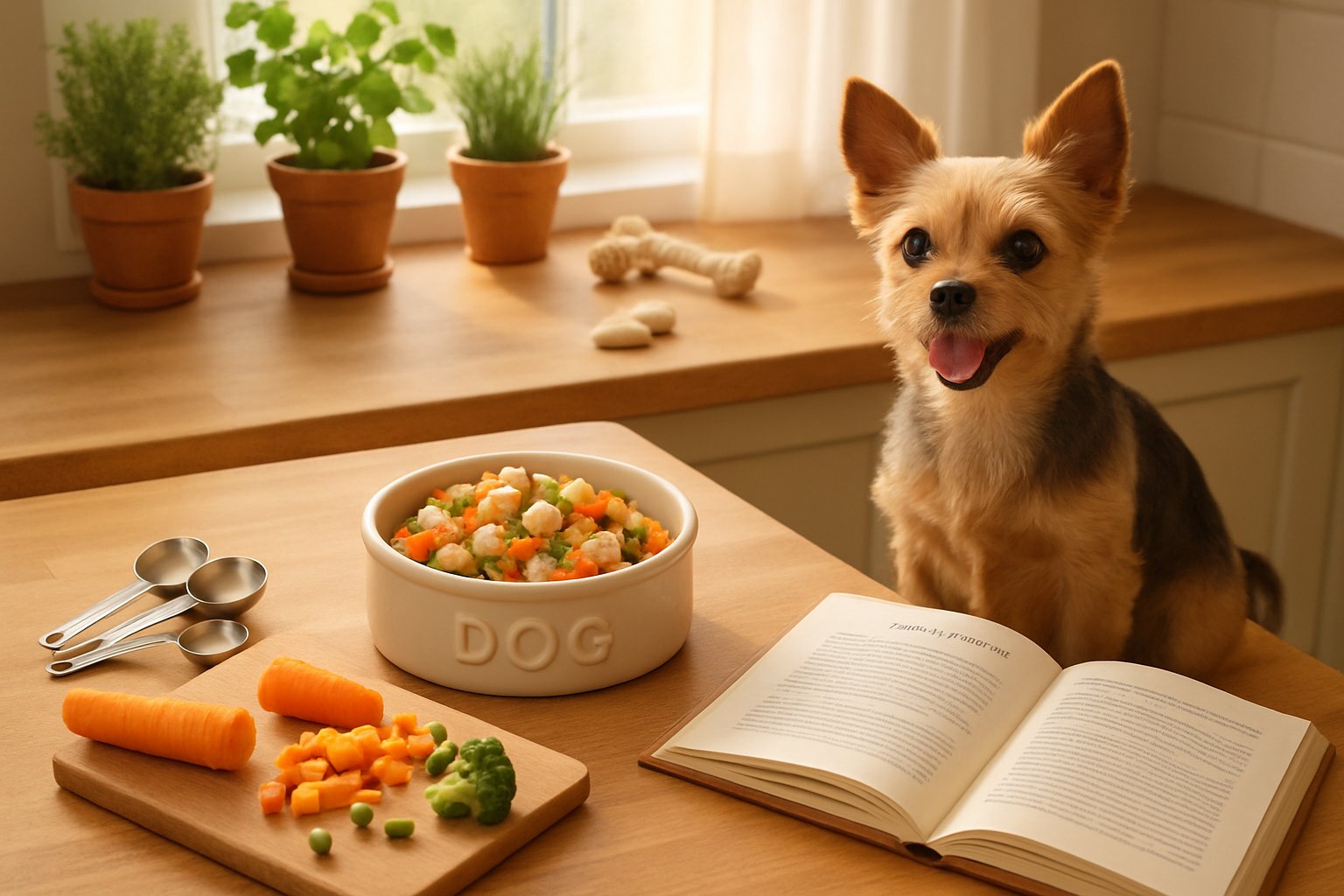
Small breed dogs need more than just smaller portions of regular dog food. Their faster metabolisms and unique body structures require specific nutrients in precise amounts, and even the kibble size can make or break mealtime success.
Key Nutrients Every Small Dog Needs
Let’s be real — your tiny pup burns calories like a Ferrari burns gas. Small dogs have metabolisms that run 25% faster than large breeds.
This means they need more protein per pound of body weight. I recommend looking for foods with at least 25-30% protein content.
Essential nutrients for small breeds:
- High-quality protein (chicken, fish, lamb)
- Healthy fats for energy and coat health
- DHA for brain development in puppies
- Calcium and phosphorus in proper ratios
Small dogs also get cold easily. Their tiny bodies lose heat faster than bigger dogs. That’s why they need more fat in their diet — around 15-20% minimum.
Don’t forget about nutrient requirements that support strong bones. Small breeds are prone to luxating patella and other joint issues.
Portion Control: How Much Is Really Enough?
Here’s the kicker — most small dog owners overfeed their pups. I see it all the time. Those puppy dog eyes are hard to resist!
Small dogs need only 1/4 to 1 cup of food per day, split into 2-3 meals. But this varies based on:
Factors affecting portion size:
- Age (puppies need more frequent meals)
- Activity level
- Metabolism speed
- Health conditions
Daily feeding guide by weight:
- 2-5 lbs: 1/4 to 1/2 cup
- 5-10 lbs: 1/2 to 3/4 cup
- 10-20 lbs: 3/4 to 1 cup
I always tell owners to feed their small dogs 3 times daily rather than twice. Their tiny stomachs can’t handle large meals. Plus, it prevents dangerous blood sugar drops.
Watch your pup’s waist. You should feel their ribs easily but not see them clearly.
The Kibble Conundrum: Size and Texture
Ever watched your Chihuahua struggle with kibble meant for a German Shepherd? It’s not cute — it’s actually dangerous.
Small breed dogs need kibble that’s 8-12mm in size. Anything bigger becomes a choking hazard or gets swallowed whole.
Why kibble size matters:
- Prevents choking
- Encourages proper chewing
- Aids digestion
- Reduces gulping and bloat
The texture should be softer too. Many small dogs benefit from puppy-friendly feeding techniques even as adults.
Look for triangular or round shapes. Avoid large, hard squares that can get stuck in tiny throats.
Some small dogs do better with wet food mixed in. It adds moisture and makes the meal more appealing to picky eaters.
Creating a Smart Feeding Routine
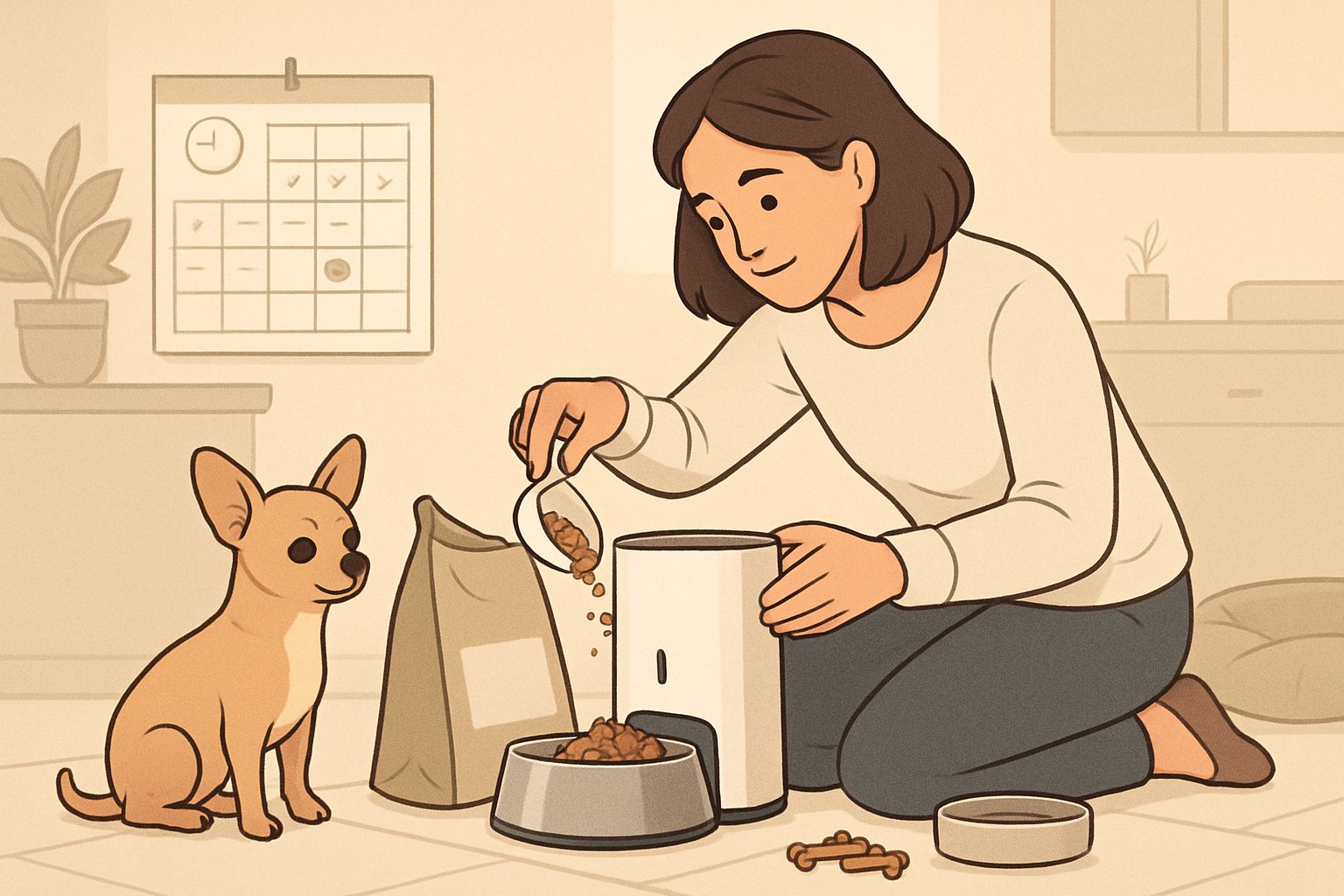
Small dogs thrive on consistency, and getting their feeding schedule right can prevent digestive issues and behavioral problems. The key is finding the right frequency and timing that matches your pup’s age, energy level, and health needs.
How Often to Feed Small Dogs
Let’s be real — small dogs aren’t just tiny versions of big dogs. Their stomachs are about the size of a walnut, which means they can’t handle large meals.
Most small dogs need to eat 2-3 times per day. Puppies under six months old should eat three to four times daily. Adult small dogs do well with twice-daily feeding.
Here’s why frequent meals matter for small breeds:
- Prevents hypoglycemia (low blood sugar)
- Reduces digestive upset
- Maintains steady energy levels
- Prevents resource guarding behavior
I’ve seen too many small dog owners make the mistake of filling a bowl once and leaving it out all day. This leads to overeating, food spoilage, and unpredictable bathroom schedules.
Free feeding is a no-go for small dogs. They need structure and portion control to stay healthy.
Sample Daily Feeding Schedules
Creating the right schedule depends on your lifestyle and your dog’s needs. Here are three proven schedules that work:
Two-Meal Schedule (Adult Dogs 6+ months):
- 7:00 AM – Morning meal
- 5:00 PM – Evening meal
Three-Meal Schedule (Puppies or Senior Dogs):
- 7:00 AM – Breakfast (40% of daily food)
- 12:00 PM – Lunch (30% of daily food)
- 5:00 PM – Dinner (30% of daily food)
Working Owner Schedule:
- 6:30 AM – Before work
- 12:30 PM – Lunch break (if possible)
- 6:30 PM – After work
The key is spacing meals 4-6 hours apart. This prevents your pup from getting too hungry between meals.
I always recommend feeding at least 2-3 hours before bedtime. This gives your dog time to digest and go potty before sleep.
Adjusting for Age, Activity, and Health
Your small dog’s feeding routine isn’t set in stone. It needs to flex with their changing needs throughout life.
Puppies (8 weeks to 6 months):
- Feed 3-4 times daily
- Smaller, more frequent meals prevent blood sugar drops
- Switch to adult schedule around 6 months
Adult Dogs (6 months to 7 years):
- Standard 2-meal schedule works best
- Active dogs may need slightly larger portions
- Couch potato pups might need portion cuts
Senior Dogs (7+ years):
- May benefit from 3 smaller meals
- Easier on aging digestive systems
- Monitor for weight changes
High-Energy Dogs need more calories spread across their meals. Think of it like fueling a sports car — they burn through energy fast.
Less Active Dogs need careful portion control. I’ve seen too many small dogs become overweight because owners don’t adjust for their lifestyle.
Health Considerations:
- Diabetic dogs need meals timed with insulin
- Dogs with sensitive stomachs do better with 3 smaller meals
- Always consult your vet for smart feeding decisions when health issues arise
The bottom line? Start with a basic schedule and adjust based on what I see working for your specific pup. Their energy levels, bathroom habits, and overall happiness will tell you if you’ve got it right.
Safe Food Choices and Sneaky Hazards
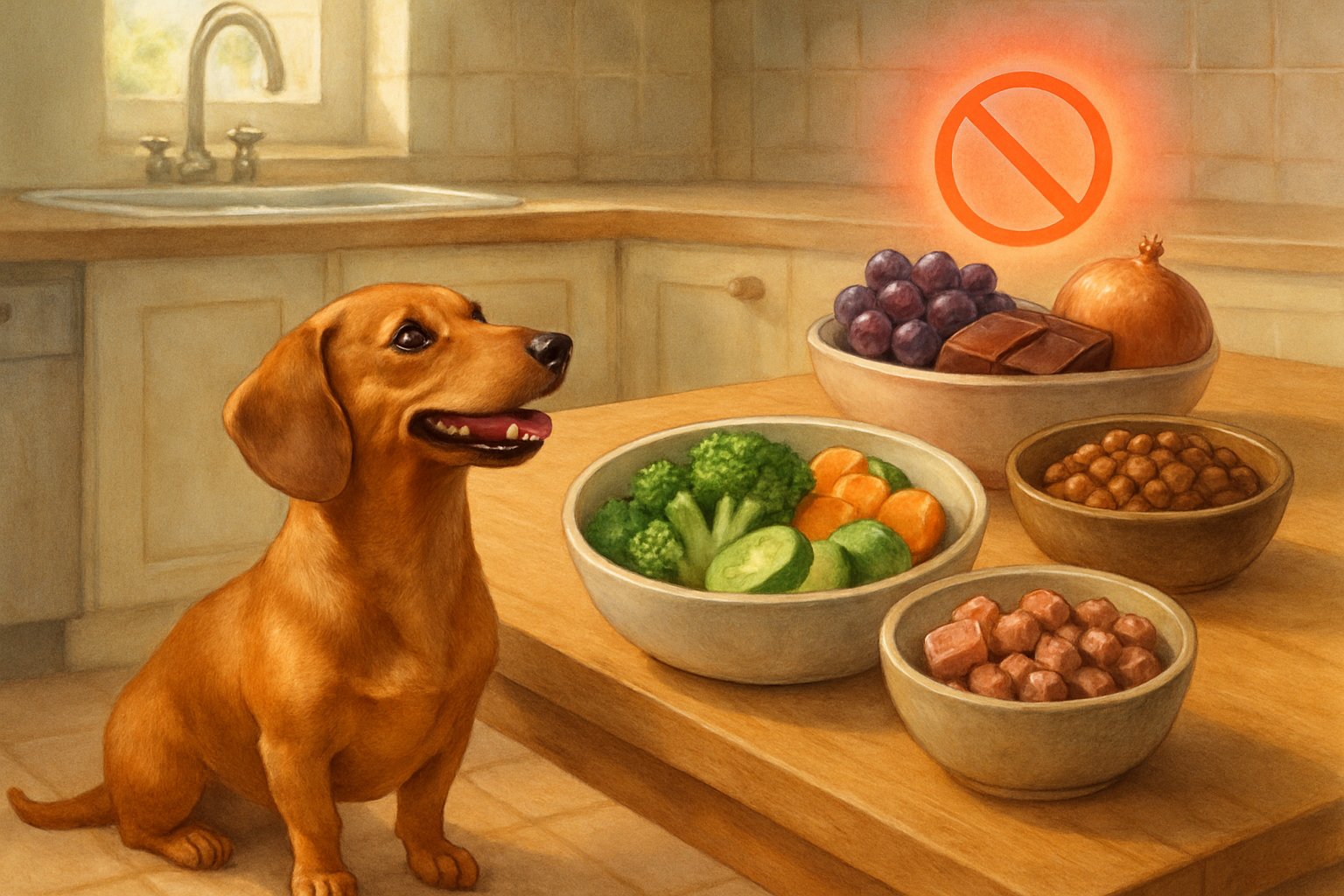
When I’m feeding small dogs, I know the stakes feel higher because their tiny bodies can’t handle mistakes like larger breeds can. Small breed dogs need careful food selection to avoid serious health issues, and some foods that seem harmless can actually be dangerous for their smaller systems.
What’s Safe: Approved Proteins, Veggies, and Treats
Let’s talk about what I actually put in my small dog’s bowl without worry. Lean proteins are my go-to foundation.
I stick with these tried-and-true options:
- Chicken breast (skinless, boneless)
- Turkey (no seasoning)
- Fish like salmon or sardines
- Eggs (cooked, never raw)
For veggies, I’ve learned small dogs actually love these healthy additions:
| Veggie | Benefits | Serving Size |
|---|---|---|
| Carrots | Good for teeth, low calorie | 2-3 baby carrots |
| Green beans | Fiber, vitamins | 5-6 pieces |
| Sweet potato | Vitamins A & C | 1 tablespoon |
| Blueberries | Antioxidants | 3-5 berries |
I always cook vegetables until they’re soft. Raw veggies can be hard for small mouths to chew properly.
Training treats should be tiny – like rice grain size. I break regular dog treats into quarters for my small breeds.
Foods to Never Feed a Small Dog
Here’s where I get serious because dogs face higher risks from toxic foods than we realize.
Never, ever give these:
- Chocolate (especially dark chocolate)
- Grapes and raisins (even one grape can cause kidney failure)
- Onions and garlic (damages red blood cells)
- Xylitol (artificial sweetener – causes rapid blood sugar drop)
The scary part? Small dogs can get poisoned from amounts that wouldn’t hurt a Golden Retriever. A single chocolate chip cookie could send a 5-pound Chihuahua to the emergency vet.
Other dangerous foods I avoid:
- Avocado (contains persin)
- Macadamia nuts
- Raw dough with yeast
- Alcohol of any kind
I keep a list on my fridge because family members sometimes forget how serious this is.
Managing Sensitive Tummies
Small breed dogs often have sensitive stomachs, and I’ve learned the hard way that switching foods too fast spells disaster.
My gentle transition method:
- Days 1-3: 75% old food, 25% new food
- Days 4-6: 50% each
- Days 7-10: 25% old, 75% new
- Day 10+: 100% new food
I watch for these warning signs of tummy trouble:
- Loose stools or diarrhea
- Vomiting
- Loss of appetite
- Excessive gas
When feeding small dogs with sensitive stomachs, I stick to these rules. Feed smaller portions more often – 3-4 tiny meals instead of 2 big ones. Their little stomachs can’t handle large amounts at once.
I keep meals simple when problems arise. Plain boiled chicken and white rice work wonders for upset tummies. No fancy ingredients until things settle down.
Some small breeds need special diets forever. My friend’s Yorkie can only eat limited ingredient foods because regular kibble gives him terrible gas and loose stools.
Avoiding Common Feeding Mistakes With Small Dogs
Small breed dogs face unique feeding challenges that can lead to serious health problems if you don’t catch them early. The key is learning to spot warning signs and making simple adjustments before minor issues become major concerns.
Spotting Signs of Overfeeding or Underfeeding
Ever wonder if you’re giving your little pup just the right amount of food? I’ve seen too many small dog owners struggle with this balance, and trust me, the signs are easier to spot than you think.
Overfeeding red flags include:
- Difficulty feeling your dog’s ribs under their fur
- Loss of visible waist when looking from above
- Excessive panting during light activity
- Reluctance to play or exercise
Small breed dogs can gain weight quickly because their tiny bodies don’t need much extra food to tip the scales. Just two or three extra treats per day can add up fast.
Underfeeding warning signs include:
- Ribs, spine, or hip bones easily visible
- Dull, brittle coat
- Low energy levels
- Constant food-seeking behavior
I always tell owners to do the “rib test” weekly. Run your hands along your dog’s sides – you should feel the ribs with gentle pressure but not see them clearly.
Recognizing changes in food intake helps prevent both overfeeding and underfeeding issues before they become serious health problems.
Tackling Weight Gain Before It Starts
Let’s be real – preventing weight gain is way easier than trying to get those extra pounds off later. Small dogs are particularly prone to rapid weight changes, so staying ahead of the game is crucial.
Portion control basics:
- Measure food with an actual measuring cup, not a random scoop
- Divide daily portions into 2-3 smaller meals
- Account for treats in your dog’s total daily calories
I recommend keeping a simple feeding log for two weeks. Write down every meal, treat, and snack your dog gets. You might be surprised by how much they’re actually eating.
Smart feeding strategies:
- Use puzzle feeders to slow down eating
- Set specific meal times instead of free-feeding
- Remove uneaten food after 15-20 minutes
Small breed dogs have faster metabolisms but also smaller stomachs. They need frequent, controlled portions rather than one big meal that might make them sick.
Watch for sneaky calorie sources like table scraps from family members or treats from visitors. These “extras” add up fast on a tiny body.
Mindful Treat-Giving Tips
Here’s the kicker – treats should never make up more than 10% of your small dog’s daily calories. That means if your 10-pound dog needs 400 calories per day, only 40 calories should come from treats.
Smart treat choices:
- Break regular treats into smaller pieces
- Use vegetables like carrots or green beans
- Try frozen blueberries for a fun, low-calorie option
- Save high-value treats for training sessions only
I’ve learned that small dogs respond just as well to tiny treat pieces as they do to whole ones. Your pup doesn’t care about the size – they care about getting rewarded.
Training without overfeeding:
- Use part of your dog’s regular kibble as training treats
- Space out treat-giving throughout the day
- Choose soft treats you can easily break apart
The biggest mistake I see? Using human food as treats without thinking about the calories. A small piece of cheese might be 50 calories – that’s already over the daily treat limit for many small breed dogs.
Keep track of who’s giving treats in your household. Kids and guests often don’t realize how quickly those “just one little treat” moments add up on a 5-pound body.
Frequently Asked Questions
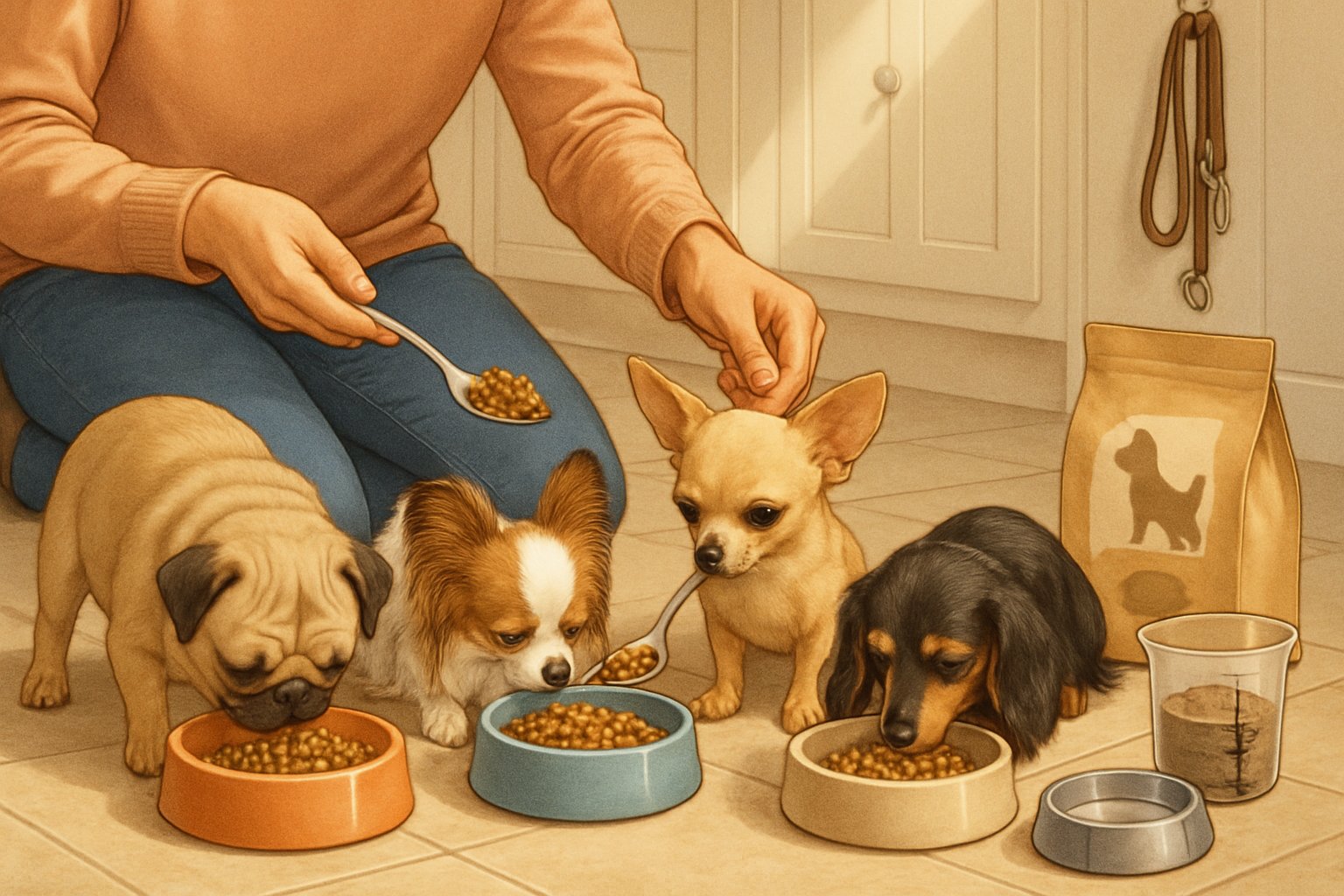
Small dog feeding can feel overwhelming with so many conflicting opinions out there. Let me tackle the most common questions I get from fellow small dog parents about nutrition, portions, and feeding schedules.
What’s the real deal with tailored nutrition for pint-sized pooches — do they need a special diet?
Here’s the thing – your tiny furball absolutely needs different nutrition than their big-breed buddies. I’ve learned this the hard way with my own small dogs.
Small breeds have faster metabolisms. They burn calories at a much higher rate than larger dogs.
Their kibble size matters too. Those massive chunks designed for Golden Retrievers? Your Chihuahua can’t even fit them in their mouth properly.
Small dog formulas pack more calories per cup. This helps meet their high energy needs without stuffing their tiny stomachs.
The protein and fat content is different. Small breeds need around 18-22% protein and 8-15% fat in their dry food.
Think of it like this – a hummingbird needs different fuel than an eagle. Your pocket-sized pup is the hummingbird of the dog world.
Ever ponder the perfect portion size for your petite pal? How do we factor in their weight?
I get this question constantly, and honestly, most people are shocked by how little food small dogs actually need. It’s way less than you think.
The basic rule I follow: 1/4 to 1/2 cup of dry food per day for dogs under 10 pounds. Dogs 10-20 pounds get 1/2 to 3/4 cup daily.
But weight isn’t everything. My active Jack Russell needs more calories than my couch-potato Pug of the same weight.
Here’s what I consider:
Current weight vs ideal weight
Activity level (is your dog a zoomer or a snoozer?)
Age (puppies and seniors have different needs)
Health conditions
Start with the feeding guide on your dog food bag. Then adjust based on your pup’s body condition – you should feel their ribs easily but not see them.
Are you scratching your head over how often you should be filling Fido’s bowl? Let’s talk schedules for every stage.
Feeding frequency changes as your small dog grows, and getting this wrong can cause some serious tummy troubles. Let me break it down by life stage.
Puppies (8 weeks to 6 months): I feed 3-4 times daily. Their tiny stomachs can’t handle large meals, plus they’re growing like weeds.
Young adults (6 months to 7 years): Twice daily works perfectly. Morning and evening, about 12 hours apart.
Seniors (7+ years): I stick with twice daily but sometimes add a small midday snack if they seem hungry.
The 2021 AAHA guidelines recommend feeding cats and small dogs appropriate portions based on their life stage needs.
Never free-feed small dogs. They’re prone to overeating and weight gain because of their slower metabolisms as they age.
Curious which dog chow the experts trust? Let’s sniff out the top vet-recommended foods for your tiny tail-wagger.
I’ve asked countless vets this question, and their answers might surprise you. They don’t always recommend the fanciest brands.
Royal Canin Small Breed consistently tops vet recommendation lists. The kibble size is perfect, and the nutrition profile hits all the marks.
Hill’s Science Diet Small Paws gets high marks too. I love that they have life-stage specific formulas.
Purina Pro Plan Small Breed offers great value without compromising quality. My vet actually feeds this to her own Yorkie.
What vets look for:
AAFCO feeding trial statements
Proper kibble size for small mouths
Balanced nutrition without fillers
Reputable manufacturing standards
Skip the boutique brands with weird ingredients. Stick with companies that invest in research and feeding trials.
You want the best for your fur baby, right? So, what’s the ultimate diet to keep your small dog spry and satisfied?
After years of trial and error with my own small dogs, I’ve found the winning formula. It’s simpler than you might think.
High-quality commercial small breed kibble should be 80% of their diet. Choose one with real meat as the first ingredient.
Add some variety with safe extras:
Plain cooked chicken (10% of daily calories)
Small pieces of carrot or green beans
A spoonful of plain pumpkin for fiber
I avoid grain-free diets unless there’s a medical reason. The FDA has raised concerns about these formulas and heart disease.
Fresh water available 24/7 is non-negotiable. Small dogs dehydrate faster than large breeds.
Keep treats under 10% of daily calories. I know those puppy eyes are hard to resist, but only 22% of dog owners get veterinary advice about treat portions.
Baffled by all the feeding guidelines out there? How about a simple chart to track your pup’s daily dining needs by weight?
Let me give you the feeding chart I wish someone had shared with me when I got my first small dog. I keep this taped to my pantry door.
Daily Feeding Amounts (divide into 2 meals):
2-5 lbs: 1/4 to 1/3 cup dry food
6-10 lbs: 1/3 to 1/2 cup dry food
11-15 lbs: 1/2 to 2/3 cup dry food
16-20 lbs: 2/3 to 3/4 cup dry food
Puppy multipliers (8 weeks to 6 months):
Multiply adult amounts by 1.5-2x
Divide into 3-4 meals daily
Senior adjustments (7+ years):
Reduce by 10-20% if less active
Switch to senior formula
Remember, these are starting points. Watch your dog’s body condition and adjust accordingly. When in doubt, ask your vet – they know your pup’s specific needs better than any chart.



Leave a Reply